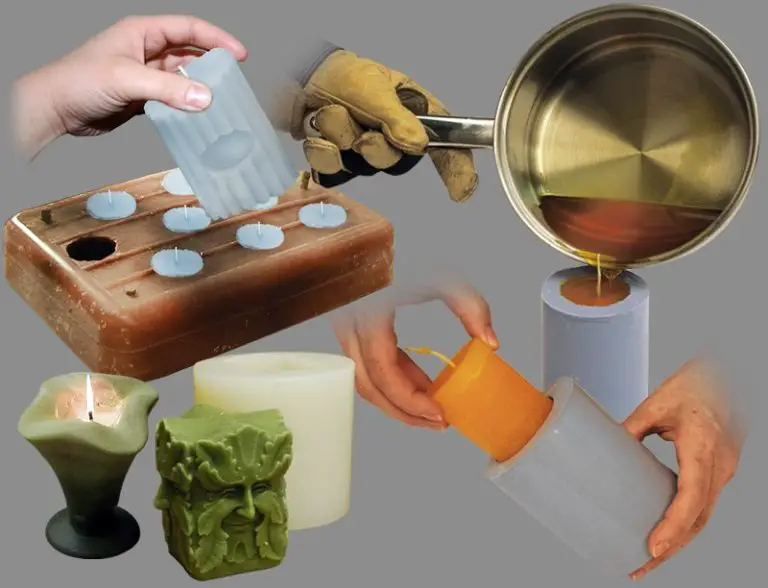Is Melting A Candle A Physical Or Chemical Change?
Physical and chemical changes are important concepts in chemistry. A physical change involves altering a substance’s physical properties, such as its state or shape, without affecting its chemical identity. A chemical change occurs when the chemical composition and properties of a substance are altered through a chemical reaction. While physical changes only change a substance on a superficial level, chemical changes result in the formation of an entirely new substance.
One example that illustrates the difference between physical and chemical changes is melting a candle. Melting a candle appears to be a physical change at first glance, but understanding candle composition and what happens during the melting process reveals whether a chemical reaction also occurs. Analyzing this common example provides insight into recognizing and distinguishing between physical and chemical changes.
Physical Changes
A physical change is a type of change that alters the form or appearance of a substance, but does not change its chemical composition or identity. Some examples of physical changes include melting, freezing, crushing, cutting, bending, and evaporating. In a physical change, the chemical makeup of a substance stays the same.
For instance, when an ice cube melts, it changes from solid to liquid form but remains chemically the same substance – water. The water molecules themselves do not change, only the state of matter changes from solid to liquid. Some other common examples of physical changes are boiling water into steam, breaking glass into pieces, dissolving sugar in water, and grinding coffee beans into powder. The original substances can usually be recovered after a physical change by reversing the process.
Physical changes involve only changes in physical properties of a substance like shape, size, color, and state of matter. The molecular structure and chemical bonds in the substance remain intact. Since the chemical composition does not change, physical changes are often reversible. However, some physical changes produce an irreversible alteration, like cutting wood or crushing cans.
Overall, the key characteristic of a physical change is that no new chemical substances are created in the process. Only the physical state or appearance changes, not the chemical identity. This distinguishes physical changes from chemical changes.
(Sources:
https://www.thoughtco.com/examples-of-physical-changes-608336,
https://www.thoughtco.com/physical-and-chemical-changes-examples-608338)
Chemical Changes
A chemical change is a change in which one or more substances are converted into different substances as a result of chemical reactions. New chemical bonds are formed and new substances with different chemical properties are produced.
Some examples of chemical changes include:
- Burning – When wood burns, the hydrogen and oxygen in the wood combine with oxygen in the air to form carbon dioxide and water vapor. This chemical reaction produces new chemical substances. (Source)
- Cooking – Cooking food causes chemical changes, such as the conversion of raw eggs into cooked eggs when heat is applied. The proteins in the egg undergo chemical changes. (Source)
- Rusting – When iron rusts, the iron combines with oxygen to form iron oxide. Rust is a different compound than the iron metal. (Source)
- Rotting – The decay of food or other organic matter causes chemical changes as compounds break down and new substances form. (Source)
Candle Composition
Candles are primarily made of paraffin wax, which is a petroleum-based wax that has the ideal properties for candle making like melting point, flow characteristics, and cost. According to Everything you want and need to know about eco-friendly candles, paraffin wax is commonly used in candle making because it is inexpensive to produce and provides a good burning candle. The wax creates the solid structure of the candle.
Candles also contain a wick, which is typically made from braided cotton. The wick runs through the center of the candle wax and acts as the ignition source when lit to start the melting process. As the wax melts, the wick absorbs liquid wax, vaporizes it and provides a flame through the burning of the wax vapors.
Melting Process
When a candle is lit, the heat from the flame causes the solid wax molecules to gain energy and begin moving faster. As the wax heats up, the molecules spread apart from each other and move from a fixed, rigid position into a more fluid, mobile state. This process is known as melting. According to the NYTimes article “Where Does a Candle Go When It Burns?”, as the candle burns, the heat melts the solid wax into liquid wax which is then drawn up the wick.

Melting is an example of a physical change, where the chemical composition of the wax remains the same but the phase changes from solid to liquid due to the added energy from the flame. No new chemical bonds are formed or broken during melting – it is simply a change in the physical state of the wax molecules.
Physical or Chemical Change?
Melting is a physical change. When a candle melts, the chemical composition and molecular structure of the wax remains the same before and after melting. No chemical bonds are broken or formed during melting (https://quizlet.com/234673159/physical-and-chemical-changes-and-density-flash-cards/). The only change that occurs is a physical one, from solid to liquid state. The candle wax molecules themselves are unchanged.
In contrast, chemical changes involve the creation of new chemical substances. The molecular structure and composition changes into something new. Examples of chemical changes include burning, cooking, rusting, and mixing acids and bases. Since the candle wax remains fundamentally the same before and after melting, it qualifies as a physical change.
Evidence for Physical Change
When a candle melts, its chemical composition remains unchanged. Melting is a reversible physical change, meaning the melted wax can resolidify back into a candle with no alteration to the wax’s molecular structure (https://quizlet.com/35372888/chapter-18-review-flash-cards/). The original chemical bonds between molecules in the solid wax remain intact when the wax melts into a liquid. No new substances are formed nor are existing bonds broken, which is the hallmark of a physical change (https://quizlet.com/85127593/final-exam-flash-cards/).
In short, melting a candle does not chemically alter the wax’s composition or identity. The wax molecules simply gain enough energy from heat to overcome intermolecular attractive forces and slide past one another into a liquid state. This process is reversible once the melted wax cools and the molecules lose enough kinetic energy to stick together again in a solid state. The candle retains its original chemical properties and structure, demonstrating melting is a physical change.
No Chemical Change Occurs
When a candle melts, no new chemical substances are formed. The wax simply changes from a solid to a liquid state. According to the University of Colorado Boulder, a chemical change results in an irreversible change in the chemical composition of a substance, forming one or more new substances. But when a candle melts, the chemical composition of the wax remains unchanged – it is still paraffin wax or beeswax. The melted wax can resolidify back into its original solid form. This reversibility indicates melting is a physical, not chemical, change (Source).
The molecules within the wax do not break apart or recombine to form new molecules when melted. The intermolecular bonds between wax molecules are simply loosened when heat is applied, allowing the molecules to slide past each other into a liquid state. No covalent bonds within the wax compounds are broken. Therefore, melting a candle is categorized as a physical change.
Examples of Chemical Changes
Unlike melting, burning a candle does involve chemical changes. Specifically, the wax and wick undergo oxidation reactions when burned, which are chemical changes.
Oxidation is a chemical reaction in which a substance loses electrons, resulting in an increase in oxidation state. During combustion, the hydrocarbon compounds in wax and the carbon in the wick are oxidized. This produces new chemical compounds, like carbon dioxide and water vapor.
The chemical reaction looks like this:
Hydrocarbon (wax) + Oxygen (air) → Carbon dioxide + Water
Since burning the candle creates new chemical compounds through oxidation reactions, it is considered a chemical change rather than a physical change like melting.
For more details on the chemical changes that occur when burning a candle, see this reference: Physical/Chemical Properties of a Burning Candle
Conclusion
In summary, melting a candle is a physical change, not a chemical change. The key evidence supporting this is that the chemical composition of the wax remains unchanged when melted. No new chemical substances are formed. Some key points:
– Candles are made of paraffin wax. Paraffin wax is composed of hydrocarbons.
– When a candle melts, the paraffin wax goes from solid to liquid state. But its chemical composition stays the same.
– Physical changes like melting only change the physical state or phase of a substance. No chemical bonds are broken or formed.
– Examples of chemical changes like burning show new chemical substances being formed through chemical reactions. Melting does not form any new chemicals.
So in conclusion, melting a candle is a reversible physical change, not an irreversible chemical change. The molecular composition remains unchanged, so no chemical reaction occurs.






